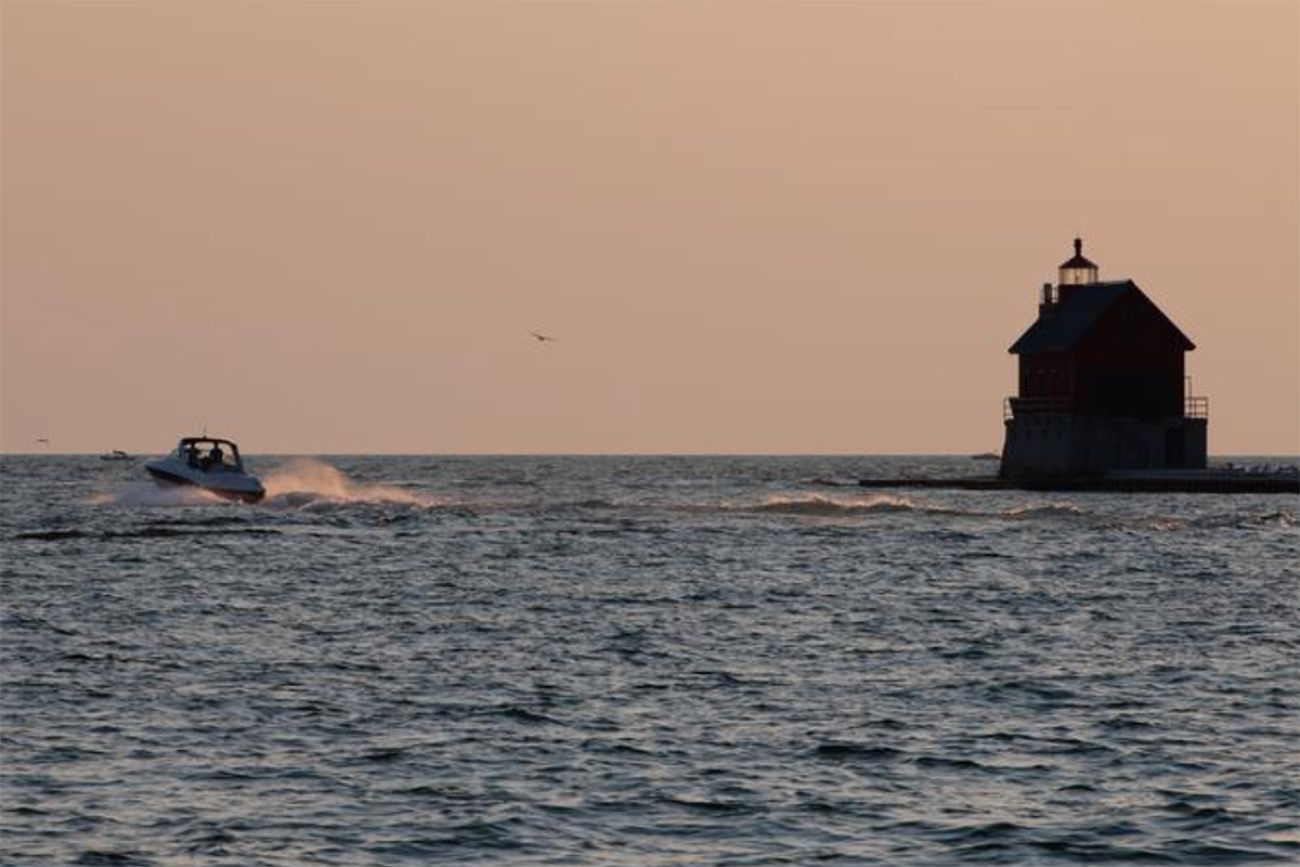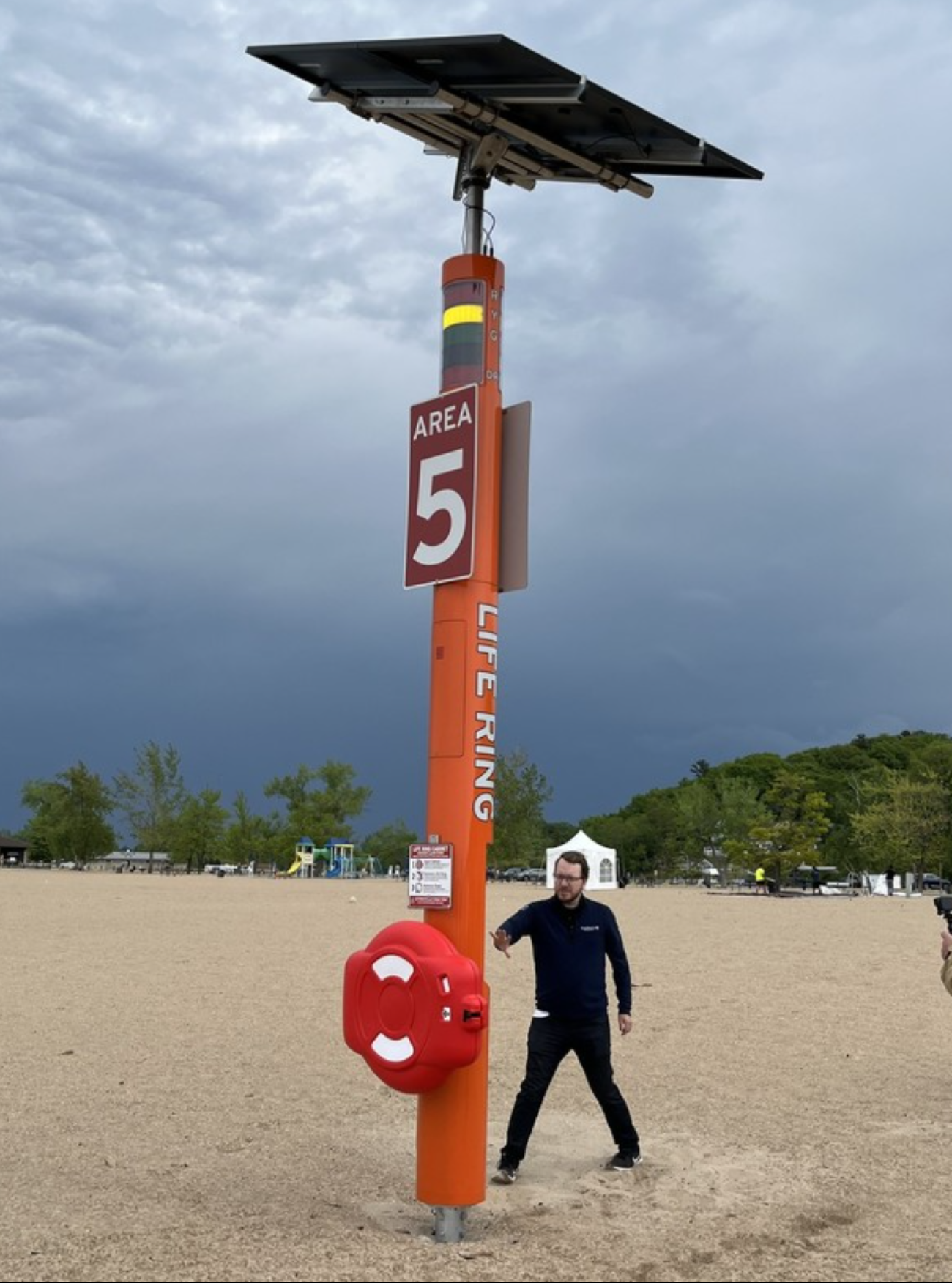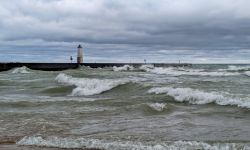The Great Lakes are warming ahead of the start of summer

- Water levels in the Great Lakes have been relatively steady over the last month, but are lower than they were this time last year
- The temperatures in the lakes have warmed, ranging from 47 degrees to 70 degrees Fahrenheit
- Lake Superior takes the longest to warm and is generally the coldest of the lakes, while Lake Erie warms the fastest
The Great Lakes are warming up as the official start of summer nears and more people head to the beach. This week’s heat wave, in which temperatures are expected to be in the low 90s in much of the state for the duration of the week, may speed up the heating process.
“It will help the Great Lakes warm up a bit … especially in the shallow areas, like along the nearshore, where everybody will swim in,” said Nathan Jeruzal, meteorologist at the National Weather Service’s Grand Rapids office.
The Great Lakes usually take all summer to warm and won’t reach their peak temperature until late August before they start to cool again ahead of fall, Jeruzal added.
While there isn’t a specific temperature for swimming, people generally feel comfortable in water that is between 70 and 78 degrees Fahrenheit, according to the National Oceanic and Atmospheric Administration’s National Centers for Environmental Information.
Related:
- Lake Michigan beach goes high-tech to curb drownings from rip tides
- Great Lakes water temperatures warming up ahead of Fourth of July weekend
The chances for hypothermia increase when water temperatures are below 70 degrees.
The temperatures in each lake vary, with Superior being the coolest because it is farther north and Lake Erie being the warmest.
Where to find warmest water
Lake Superior: Temperatures in Lake Superior are warmest in the western part of the lake near Minnesota — ranging from 47 degrees Fahrenheit to 60 degrees as of Tuesday.
Lake Michigan: The temperature in Lake Michigan is about 58 degrees near Port Island in the Upper Peninsula and is warmest near Holland, where the temperature is about 67 degrees.
Lake Huron: Similarly, the northern part of Lake Huron is the coolest, with temperatures ranging from 52.3 to 58.8 degrees near the Upper Peninsula and Alpena and 61.7 at Harbor Beach in the Thumb.
Lake Erie: Lake Erie temperatures range from 67.5 degrees near Cleveland to 70.7 degrees in the Marblehead Peninsula, which divides Lake Erie proper from Sandusky Bay.
Water levels
The water levels in each of the Great Lakes fluctuate with the seasons, just as the temperatures do, and can also be affected by short-term events like winter snow melt, hurricanes or coastal storms, according to the NOAA.
According to Great Lakes Integrated Sciences and Assessments — a joint project of the University of Michigan and Michigan State University — high or low water levels can impact fisheries, commercial shipping, hydropower generation, recreational boating, shoreline flooding and coastal erosion.
“The variability of Great Lakes water levels is necessary for the continued health of the Lakes but can create challenges for waterfront communities and homeowners,” the Michigan Department of Environment, Great Lakes, and Energy explains on its website.
The average water levels in lakes Superior, Michigan and Huron have increased by 2 to 3 inches in the last month, according to the U.S. Army Corps of Engineers.
Lake Erie has remained the same, and Lake Ontario’s water level has decreased by an inch in the last month.
Compared with this time last year, the water levels in all of the Great Lakes, with the exception of Lake Erie, in which the water level has increased by an inch, are significantly lower.
The average water level in Lake Superior is 11 inches lower than it was last year and it’s 12 inches lower in Lake Ontario. The average water level in lakes Michigan and Huron is down 2 inches.
‘The water is always dangerous’
While the Great Lakes are popular destinations for swimming and other water activities, strong currents can form, which can be hazardous.
“The water is always dangerous,” said Bob Pratt, co-founder and executive director of the Great Lakes Surf and Rescue Project.
Accomplished swimmers and surfers used to colder waters and high waves may not be fazed by those conditions, Pratt said, “but if you are an absolute novice and you've never been in waves before, then it doesn't really matter what your swimming ability is.”
There are no lifeguards at any state parks including those along the Great Lakes. The Michigan Department of Natural Resources has a flag warning system at state parks that alerts swimmers of the conditions of the water.

Last year, the state passed a law that prohibits beachgoers from entering a body of water when there is a double red flag, which means the water is too dangerous and is closed. People who still go in the water can be fined.
The DNR recently unveiled a new warning system at Grand Haven State Park which includes 12 electric towers. Each tower has a life ring and can play pre-recorded messages to visitors of changing water conditions, important information or during emergencies. If one of the towers is activated in the event of a water emergency, 911 and park rangers will be notified.
“One of the improvements that … will be happening this summer is a push button that will be on that same tower,” said Pat Whalen, Plainwell district supervisor for the DNR Parks and Recreation Division. “Somebody can walk up, push a button and speak with somebody at central dispatch.”
The update can be used for medical, water emergencies or if someone needs police assistance.
Michigan Environment Watch
Michigan Environment Watch examines how public policy, industry, and other factors interact with the state’s trove of natural resources.
- See full coverage
- Subscribe
- Share tips and questions with Bridge environment reporter Kelly House
Michigan Environment Watch is made possible by generous financial support from:
Our generous Environment Watch underwriters encourage Bridge Michigan readers to also support civic journalism by becoming Bridge members. Please consider joining today.
See what new members are saying about why they donated to Bridge Michigan:
- “In order for this information to be accurate and unbiased it must be underwritten by its readers, not by special interests.” - Larry S.
- “Not many other media sources report on the topics Bridge does.” - Susan B.
- “Your journalism is outstanding and rare these days.” - Mark S.
If you want to ensure the future of nonpartisan, nonprofit Michigan journalism, please become a member today. You, too, will be asked why you donated and maybe we'll feature your quote next time!






